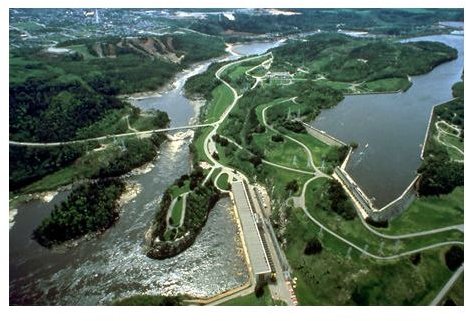HVDC transmission basics - Learn how power is transmitted in DC form
Introduction
We learnt about the basics of power transmission in our previous article. Now we will take a look at the hvdc transmission basics and transmission of DC power over long distances. If you are thinking that you have mainly heard about AC being transmitted over long distances, you are quite right in this regard. Mostly AC power is transmitted but then there are advantages of both types of power transmission which we shall see below.
DC Power Transmission
It is true that initially the transmission of AC power was the only effective mode of power transmission due to high losses associated with the DC transmission. But this has certainly changed over the years with the development of new techniques and technologies and the use of DC transmission is certainly on the rise.
Some of the main advantages of using DC over AC are as follows.
A DC power line only requires two lines of conductors to be transported as compared to AC power which required an additional line as well. This may not seem a big deal but just imagine the saving of material and cost when such a transmission has to be carried across hundreds and thousands of kilometers. A good example of this is the power transmission lines that carry DC power from Nelson River to Winnipeg over a distance of 1000 kilometers. Mathematically speaking, using 2 lines instead of 3 means that two-thirds cost savings are achieved in conductor cost. Of course there can be 3 wires in a DC system as well but that is for another purpose as we shall see later.
Since AC power flows in sinusoidal mode, the peak voltage is much higher than the effective voltage while they are same in DC power. This means that for a given effective voltage, the interference from AC power cables will be much higher than that of DC power cables.
Of course this does not mean to say that DC power has not disadvantages. The main disadvantage of DC power is that transformers only work on AC power. That means that stepping up/down of voltages is only feasible with AC power only. Normally transmission is associated with high voltages (and low currents) to minimize losses. This is so because transmission losses are proportional to the square of the current. Of course there are limitations of increasing voltage because of the cost of the transformers, which could rise prohibitively as the voltages get higher. We will take up this issue in detail in later articles.
AC to DC Conversion
Because of the above mentioned limitations of voltage stepping, a practical method is to
- Generate AC power
- Increase its voltage using transformer
- Transmit it in DC form
- Convert back to AC at substation
- Step it down and distribute as usual
AC to DC conversion can be carried out using either
- Mercury Arc rectifiers
- Rotary converters
- Motor-generator sets
We will study all the above concepts and equipment in future articles
Overhead and Underground Transmission
The power plants are normally located at remote areas and the consumers are located literally everywhere. Hence when long distances are involved in power transmission, there are various types of terrains which might fall in the way. There could be mountains, rivers and even parts of the ocean. You can see the picture which shows what types of terrains might need to be covered for power transmission.
Depending on the terrain, either overhead or underground cabling can be used and each of them has their own advantages. Overhead transmission is relatively cheaper and moreover it could be easier to repair in case of any damage simply because of its physical visibility.
Underground cabling could mean more cost of installation but could result in substantial space savings as well as it is more aesthetically appealing then the array of wires and poles covering the space.
References
Research Paper on Transmission and Distribution Networks: AC versus DC - by Larruskain et al. Universidad del País Vasco
Image Credts
Canadian Encylopedia Website
